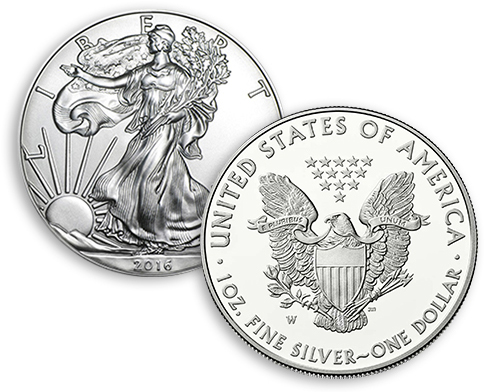- February 04, 2016 -

Is the U.S. Mint failing it its mandate to supply Silver Eagles?
Recently on more than one occasion I have come across bloggers essentially claiming that United States Mint is failing in its legal mandate to meet domestic investor demand for Silver Eagles. They argue that this especially holds true when market factors lead to significant increases in demand. Arguments range from poor management to nefarious intent to drive up Silver Eagle prices. As one of only twelve organizations worldwide that can buy Silver Eagles directly from the U.S. Mint, a.k.a. Authorized Purchaser, Jack Hunt Coin Broker has a clear picture of both the supply and demand issues involved with Silver Eagles. There are numerous reasons, that work individually and/or in conjunction that sometimes affects Silver Eagle supply. Consider the following:
1. The United States Mint, unlike almost every other government agency, runs as a profit center. As such, it’s operated like any other business in our capitalist society. It balances supply and demand based upon market conditions. The Mint, like many businesses, does not want to carry excess inventory. What it produces it wants to move. As a result it does not purposely carry Silver Eagle inventory in anticipation of spikes in demand. Instead, the Mint ramps up production in response to increased market demand. This leads into our second point.
2. Silver demand is extremely difficult to predict. Yes, industrial demand is somewhat predictable based upon national and international economies. Yet investor demand is virtually impossible to predict. Spikes in investor demand are most often driven by emotional responses to unpredictable national and international events and/or sudden shifts in either the nation or global economies. Think outbreak of war, political instability, sudden economic downturns, changes in national or global economic policies, etc.
3. In some cases the U.S. Mint cannot meet Silver Eagle demand because of a shortage of blanks. Most do not realize that the Mint does not produce Silver Eagles from scratch. Instead they purchase blanks from private suppliers that the Mint then stamps into Silver Eagle coins. In some instances the Mint’s vendors are unable to fulfill sudden upticks in demand as a result of their own production backlog or reduced supply of raw silver. This ties into the fourth point.
4. Silver mines cannot always keep up with sudden, substantial increases in demand. Obviously this backs up the supply chain that ultimately leads to delays in the production and hence supply of silver eagles. Another point to consider here is the cost of mining. If silver spot prices were to go even lower some silver mines quite possibly could shut down as the cost of extraction becomes too high relative to silver’s spot market pricing.
With these points in mind what these bloggers fail to realize is that when the Mint ramps up production to meet Silver Eagle demand that authorized purchasers often end up with significant levels of excess inventory. The same bloggers who complain the Mint failed to meet investor demand this past summer did not call back in October when demand suddenly subsided and there were plenty of Eagles available in the market.
A final thought. From a retail perspective the most knowledgeable silver investors lean towards buying silver on a regular periodic basis, cost averaging their silver position over long period of time. In the big picture there is less consideration of what is happening in the short term. Of course we get more calls when the market is down on a given day but these same investors do not wait months or years between purchases in trying to buy at the bottom of the market.
Order by 4:00
and it’s out the door.
1 oz. Gold or 100 oz. Silver
Trade Scrap for Bullion.
No-worry Shipments
Get paid fast!
(for qualified customers)
We don't make promises we can’t deliver on.